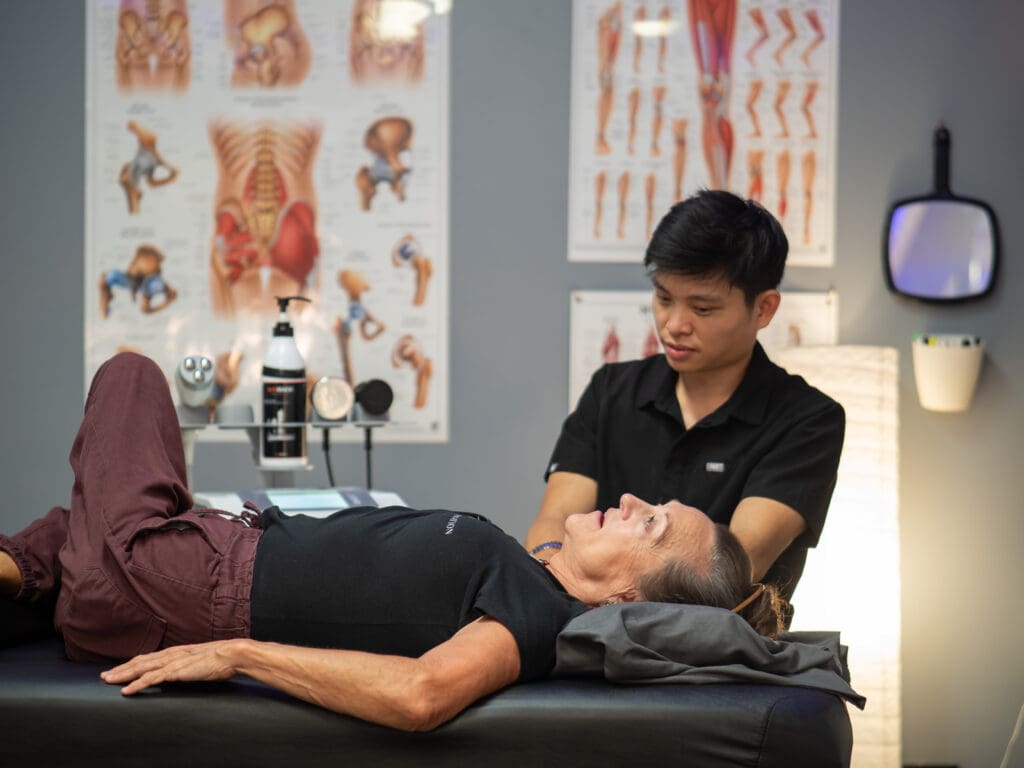Hip pain can be a frustrating issue that affects many, often leading to diagnoses like sciatica or hip bursitis. But what if the real cause is something else? At TRACE Body Rejuvenation in Houston, we dig into the often-overlooked connection between sciatica and hip bursitis and introduce a key player in hip pain—Greater Trochanteric Pain Syndrome (GTPS). Getting to the root of your pain is crucial for finding the right treatment and avoiding unnecessary procedures.

GTPS causes sharp, burning pain on the outer part of the hip, which can spread down the thigh. Many people struggle to sleep on the affected side, and daily activities like running or climbing stairs can become painful. These symptoms are often confused with sciatica or bursitis, but it’s important to recognize that GTPS specifically affects the tendons and muscles surrounding the hip. Misdiagnosis can lead to months of ineffective treatment, so understanding these unique symptoms is key to getting the right care.
Misdiagnosing hip pain as sciatica or bursitis is unfortunately common. When this happens, treatments may miss the mark, leaving you stuck with unresolved discomfort. Often, the real issue is GTPS, which impacts the gluteal muscles and tendons around the greater trochanter—the bony area on the outside of the hip. GTPS symptoms can closely resemble sciatica or bursitis, making an accurate diagnosis essential for proper care. By pinpointing the true source of your pain, you can avoid ineffective treatments and focus on what works.
GTPS often causes tenderness on the outer hip, pain while lying down, and discomfort during extended physical activity. It’s easy to confuse these symptoms with sciatica or bursitis, but mistaking GTPS can lead to the wrong treatments, even unnecessary surgeries. At TRACE Body Rejuvenation, we focus on using non-invasive therapies that target tendon inflammation and help you get back to feeling your best. Our state-of-the-art TECAR therapy combined with manual techniques help reduce or eliminate pain after three sessions.
When you walk into a clinic with hip pain, the goal is to figure out the root cause. But with overlapping symptoms, hip bursitis, sciatica, and GTPS are often confused. Bursitis and sciatica tend to be diagnosed most frequently, even when the actual issue is GTPS, which affects the outer thigh near the hip. Misdiagnosis can lead to treatments like corticosteroid injections for bursitis or physical therapy for sciatica that don’t tackle the real problem. In fact, these treatments could even make things worse if GTPS is the true cause.
Catching GTPS early can prevent it from becoming a long-term problem. Early diagnosis allows for targeted therapy that strengthens the hip muscles and reduces strain on the tendons, potentially eliminating the need for surgery. Making simple lifestyle changes—like adjusting how you sit, sleep, and exercise—can also help manage GTPS.
When it comes to hip pain, an accurate diagnosis is essential for effective treatment. Misdiagnosis can lead to unnecessary surgeries or prolonged discomfort. At TRACE Body Rejuvenation, we use advanced therapies to address the cause of your hip pain, whether it’s sciatica, bursitis, or GTPS.
Take control of your hip pain today by scheduling a consultation with TRACE Body Rejuvenation. Our team is dedicated to helping you find the right treatment—no unnecessary surgeries, just relief! Don’t let hip pain hold you back any longer; contact us now to start your recovery journey!